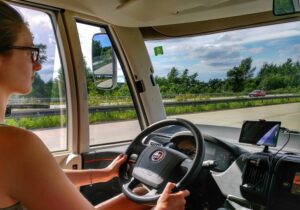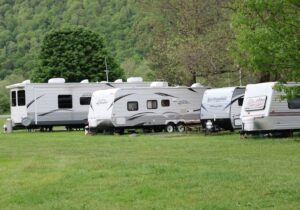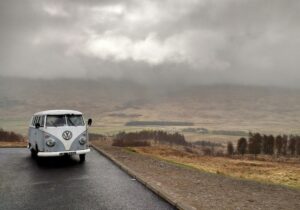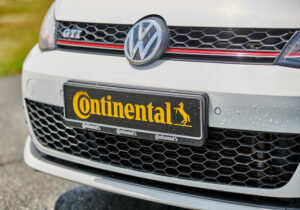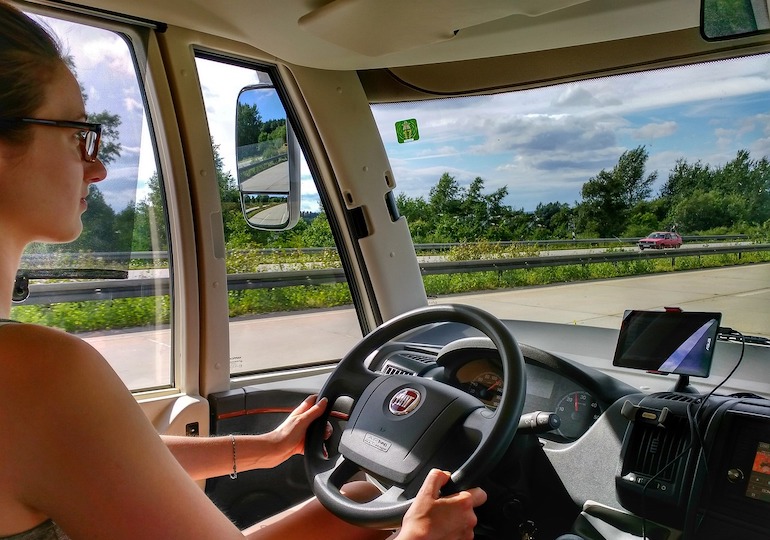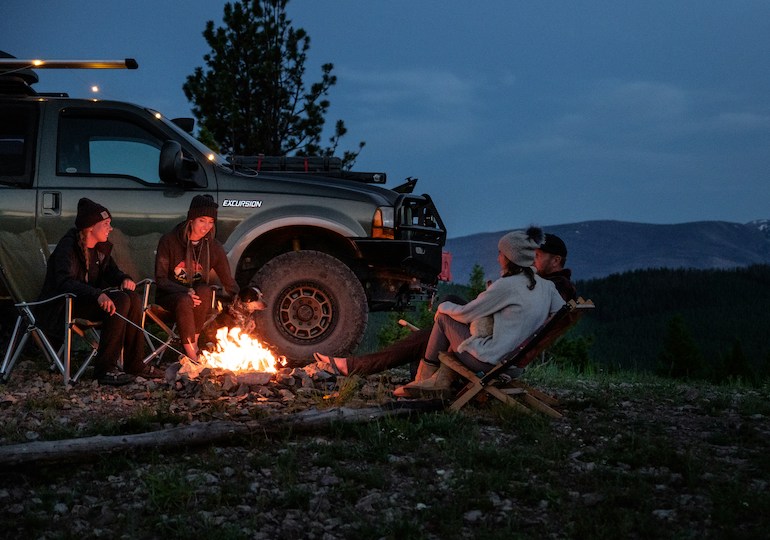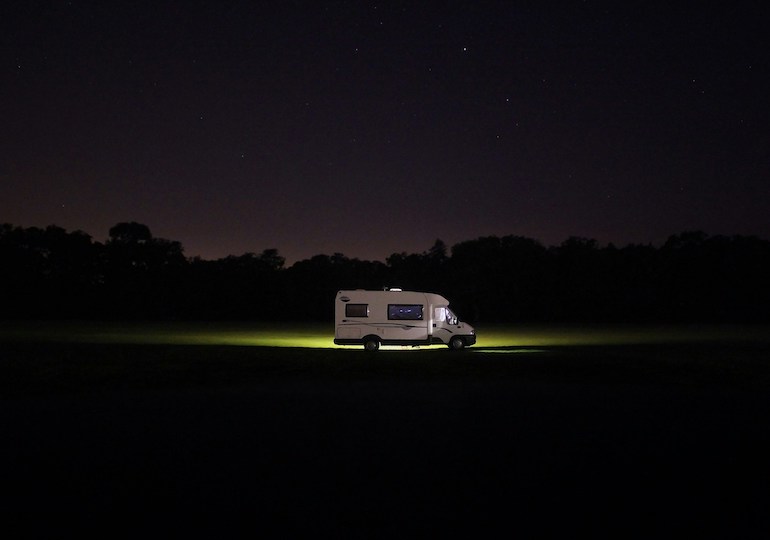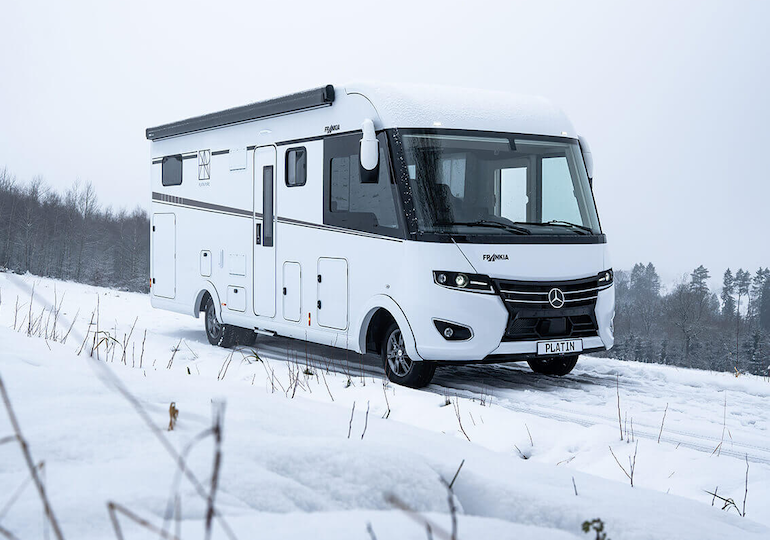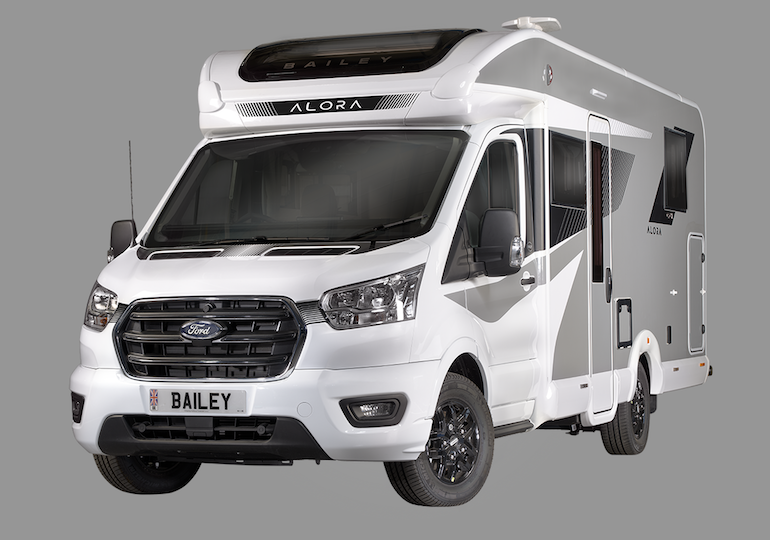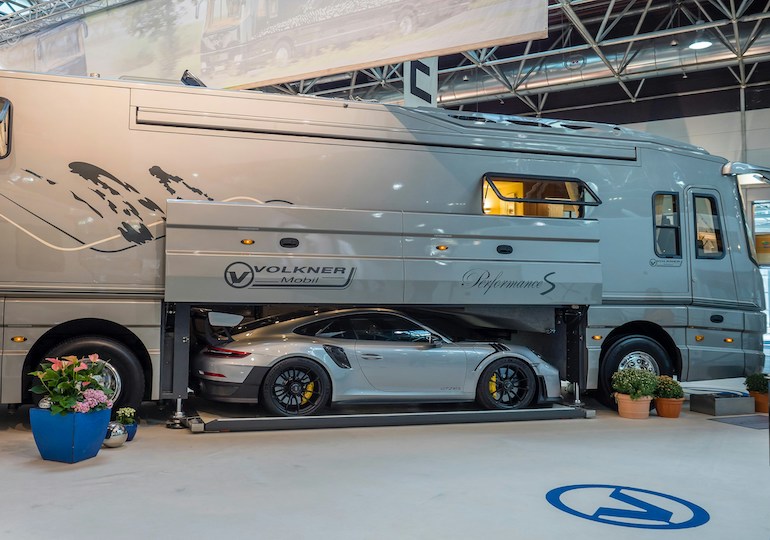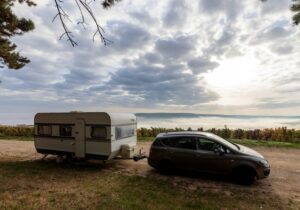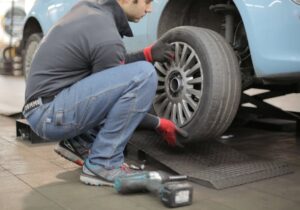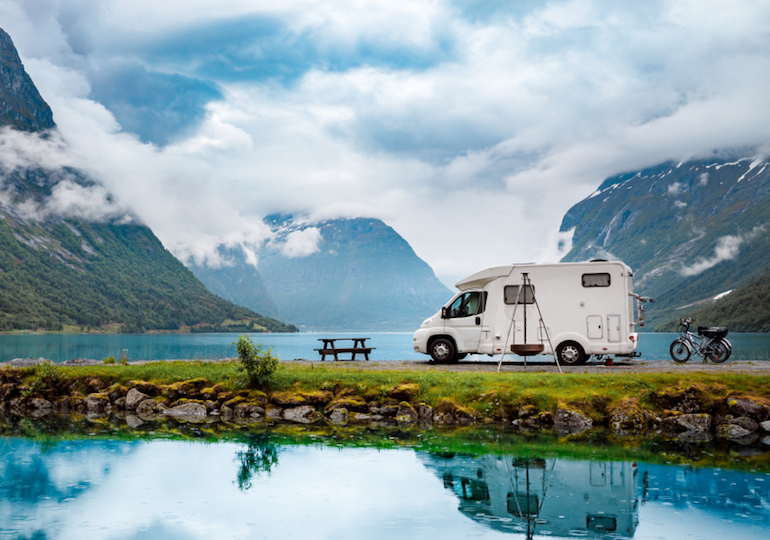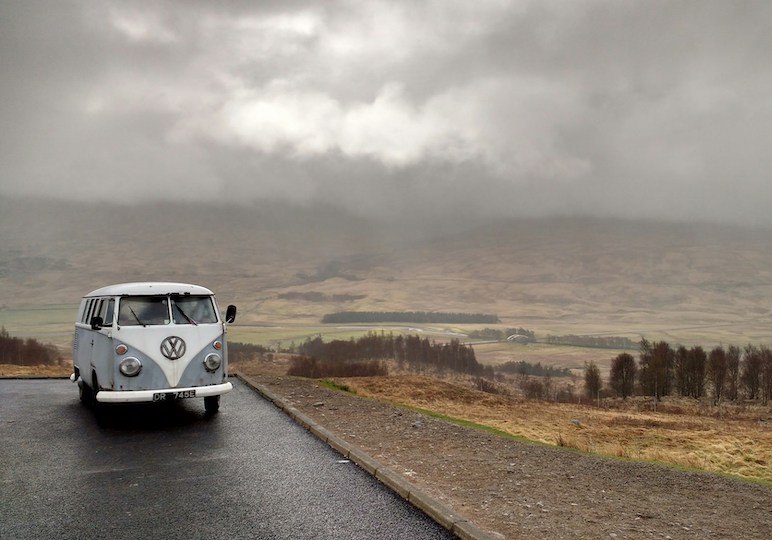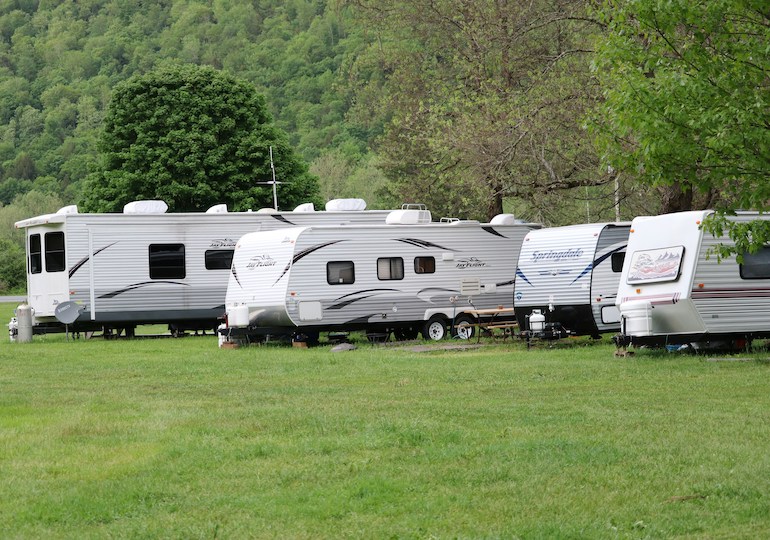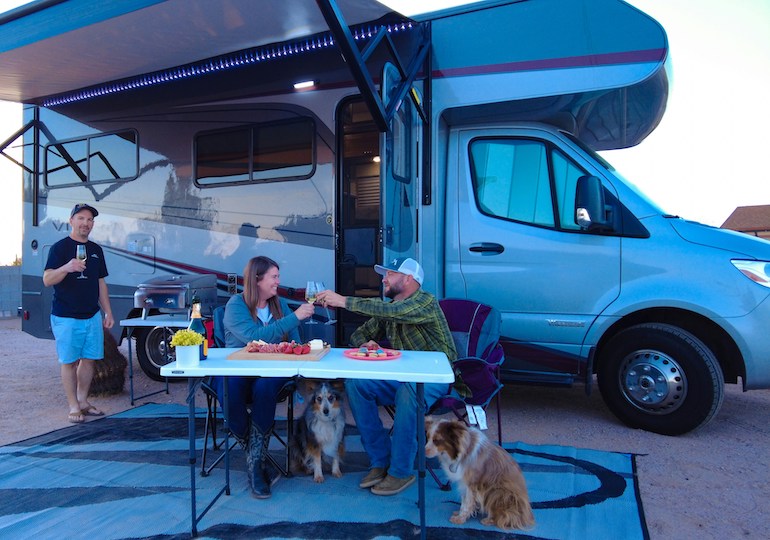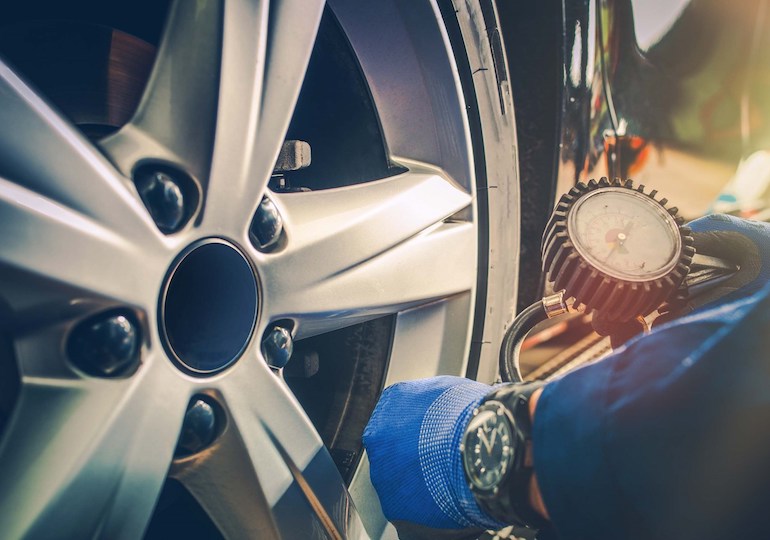Dan Cartwright has over 12 years of experience in the caravan and motorhome industry. He is a judge for a number of prestigious leisure vehicle awards and regularly heads off in his motorhome with his family. Every week, Dan shares his insights with the community. Here’s what he has to say this week.
For anyone thinking about heading off the beaten path with their leisure vehicle, a common worry is whether or not you can run your caravan, motorhome or campervan in remote locations solely on electricity. So, is it practical, or even possible? There are a few things you need to consider.
Firstly, heading off-grid unlocks a lot of touring potential. So many beautiful places like Spanish aires and certified locations in the UK don’t have electricity, yet provide breathtaking backdrops for a holiday.
Other destinations that do have electric hookups aren’t always helpful either. Prices can vary and are often very expensive. Having facilities to charge your leisure vehicle at home means that you can power your caravan or motorhome for a heavily reduced cost.
Finally, using sustainable sources to charge your vehicle while you’re away is a great way to lessen your environmental impact. However, what does leaving those gas bottles out mean for your holiday? To understand this, we’ll look at some different battery technologies and various ways of regulating your electricity usage.
Remember, as I’ve said before, owning a leisure vehicle requires a compromise between space, weight, cost and comfort. Each one pulls against the others and striking a perfect balance for yourself is the key to a wonderful holiday.
How do you run a leisure vehicle without gas?
Well, by stripping out the gas, you initially have some gains. There’s no need to carry heavy bottles, you won’t be using fossil fuels directly and you won’t need any gas piping or cutoffs. Additionally, there’s no requirement to have appliances that usually run on gas.
However, leaving the gas bottles means that you also have to find different ways of cooking, heating and powering your fridge. Domestic appliances can do this with electricity, but they tend to draw a lot of it. Each one will have a label telling you the wattage it uses, essentially giving you an indication of how hungry it is. To give a rough idea, a TV uses around 70W, a laptop charger up to 90W and a hair dryer nearly 2,000W.
Battery technologies
The fundamental idea behind a battery-powered, off-grid habitation is that you can charge your power source in a motorhome whilst driving, or by using solar panels on your caravan. Then, you use that power to run your habitation however you want to.
The different sources of charge going in will be either from the mains on a hookup, your engine if using a campervan or motorhome, or any other form of renewable energy source attached to your leisure vehicle. Generally, these will be solar panels, but I have seen small wind turbines on campsites as well.
All of that input power is stored within a battery – typically 12V direct current (DC) – and then distributed to appliances as you use them. How much energy you need depends entirely on what you’re planning to do. The adoption of LED lights and using iPads instead of TV satellites massively reduces the amount of power drawn, but there are still things like your fridge and heating which can use a lot.
Cooking
Induction hobs are among the most effective appliances for power, as they use all of the heat generated, therefore wasting less. Additionally, reducing the size of your fridge will heavily reduce your power consumption too.
Heating systems can run on electricity, usually at 12V. However, if you’re creating an off-grid system, I’d recommend using an inverter so you can run 240V appliances directly from your battery. Things like your fridge and the hob will certainly need to be 230V inverted.
Aside from people with a tea or coffee addiction, that’s most of your base comforts taken care of. But what other systems do you need to make this practical? First, let’s think about the different types of batteries available.
Battery types
I’d like to start with one I wouldn’t recommend – non-sealed liquid acid batteries have the shortest life of all types and tend to lose their full capacity very quickly. This is not helpful if you’re planning to head somewhere remote in your leisure vehicle.
Gel batteries are better, as they can be housed in a variety of positions anywhere other than upside down. These are slightly more expensive, but still very affordable.
For a longer duration, absorbed glass mat (AGM) batteries are highly stable and, as a result, typically double the price of their gel counterparts. But they do last longer and are slightly more compact.
If you have a bit more money to invest in your setup, I’d strongly recommend looking at lithium-ion batteries. They can be mounted anywhere – including upside down – and typically weigh half of a liquid battery. They’re the kind of batteries that you find in mobile phones and portable chargers.
Lithium-ion cells can last up to four times as long as other batteries, but unfortunately, do cost around four to eight times the price. If you can afford it, this is the ideal component for that all-important compromise between space and weight.
Other things to think about
It’s important to consider whether you’d like to have one or two batteries. For off-grid touring, it’s a much safer bet to travel with two, especially if you’re heading off in cold, wintry conditions.
This inevitably comes with additional technology requirements. You need to be able to connect them either in series or parallel, with the latter offering 2,000 amp hours. In series, you’ll achieve the same output, but only from one battery at a time.
More importantly, you will need to charge both of your batteries and regulate them throughout your journey. It’s a lot more complicated than it sounds to ensure your batteries are fully changed, so it’s worth getting a professional consultation.
Moreover, think about what charging inputs you have. You may or may not have an engine, electricity or an external grid. If you have solar panels, how big are they? What wattage are they? Typically, they come as standard at 100W, but if you have the roof space, you can find some that are 350W. As a note, your solar panel will only work if you’re not using the roof rack or rails, which a lot of campervans do.
Lastly, seriously consider how that power will be delivered to your batteries. If you’ve got two expensive cells, it’s worth investing in a fast charging system, an extra technology that can power your batteries in half the time it would usually take.
Final thoughts
So, with all of these things considered, is it possible to go off-grid with a fully electric habitation? Yes, of course. The duration will depend on the number of batteries you have, what charging facilities are available and what time of the year you’re heading off.
You can support this by preparing foods that are quick to cook (omelettes are great for this), limiting how often you boil water and bringing an extra duvet to avoid running the heating through the night. If done correctly, you can tour for many days and be almost self-sufficient.
A good friend of CaravanTimes and author of the ‘Take the Slow Road’ travel series, Martin Dorey has been all-electric for many years and is now on the cusp of total self-sufficiency. He’s marginally obsessed and loves the idea of using renewable energy to power his holidays.
Photo credit: TRAVEL BLOG / Pexels


